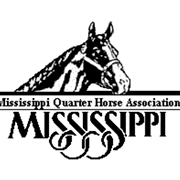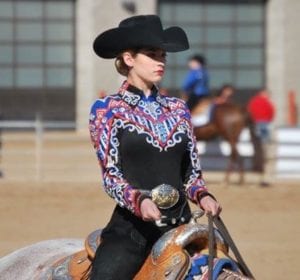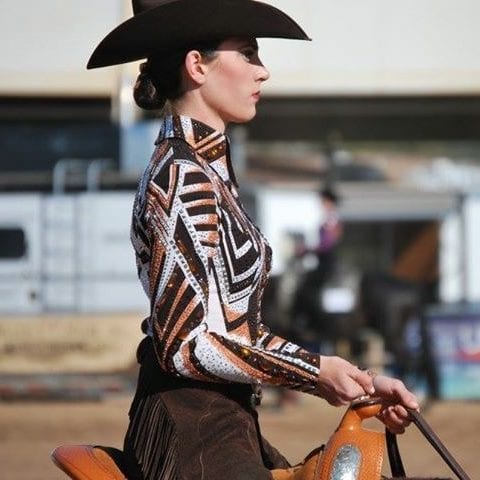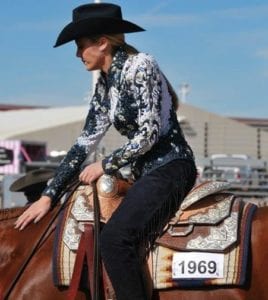Western horsemanship is a class that has evolved considerably in recent years. Not only is it now a scored event, the way the class is ridden is much more fluid and faster paced than in years past.
However, even though the styles may have changed, the basics are still the same.
If you break down a horsemanship pattern, each maneuver is basic when looking at it alone, and body position is also a basic of riding in general.
It is this theme of basics that AQHA World Champion horsemanship trainer, AQHA Professional Horseman, and judge Brad Kearns focused on when GoHorseShow wanted to get the lowdown on how to master this class. Kearns also imparted his wisdom on how to improve your score, and how to actually become a better horseman in the process.
1) Know Your Rules
No matter what association or class you show in you need to be familiar with the rulebook.
“Find out what skills are expected of you and your horse in the classes you are showing in and what will gain you points and where you will incur penalties,” Kearns said, “The rules for horsemanship spell out the maneuvers that you could be called upon to execute in a pattern such as circles, straight lines, turns, lead changes, sidepass, etc. With the knowledge of the possible maneuvers that are expected, you can practice these to try to make them become second nature to you and your horse.”
Remember that whole thing about how body position is a basic?
Kearns said, “Put in your time working on position. If you don’t have a person to watch you from the ground, position your smartphone on the fence or on a bucket to video yourself to see your position. Be ingenuous to help find your strengths and weaknesses.”
Kearns adds, “Also work on your maneuvers. You have to be able to perform the maneuvers that are prescribed in the rules of your association in a basic, correct fashion.”
3) Do Your Homework At Home
Olympic athletes don’t just show up at the Olympiad and give gold medal performances. They spend hours upon hours perfecting their craft.
“You need to practice your maneuvers at home before jumping into the big pool of the horse show,” said Kearns. “You then go to the show to gauge how your horse is coming along with his/her learning process. The horse show is not the place to start new things. Stick to your basics you’ve worked on at home. If you need to step up your game when you get home you can.”
It’s been said many different times and many different ways, but clearly, it bears repeating. A horse show is not a training facility.
“You and your horse have a specific skill set you have been working on at home, right?” said Kearns. “So when it comes time to show, draw from your skills. Don’t be intimidated by the person spinning 100 mph, or the person trotting really fast and then try to duplicate them. You came with your skills. Do your basics better than anyone else.”
There’s that word again. Basics. Be confident in what you have to bring to the show pen and do what you know better than anyone else.
5) Be Correct
Could this be another basic concept? Why yes, yes it is!
Kearns said, “Being correct is your starting point. Correct in your position, correct in your drawing of the pattern, and correct in your maneuvers.”
Seriously folks, it really is that simple. Don’t make it more difficult than it needs to be.
6) Know The Pattern
 “Read the pattern and match the drawing to the words,” said Kearns. “Lay out the pattern in your mind and visualize it in the arena. Match the pattern to the arena size and find focal points in the arena to help you draw your pattern such as signs on the fence, a gate or fence post, position of the announcer, etc.”
“Read the pattern and match the drawing to the words,” said Kearns. “Lay out the pattern in your mind and visualize it in the arena. Match the pattern to the arena size and find focal points in the arena to help you draw your pattern such as signs on the fence, a gate or fence post, position of the announcer, etc.”
It was mentioned earlier how the class of horsemanship has changed over the years. Nowadays, there is sometimes only a start cone, so it is absolutely imperative that you decide just how you are going to execute the pattern before you enter the show pen. You risk getting really lost if you don’t know where you’re going.
7) Practice, Practice, Practice
Kearns said, “If you feel a theme being built, then I’m doing my job. Excellence comes from examining and improving even the smallest of skills. If there is a straight line down the middle of the arena to start the pattern, then practice that straight line, A LOT! If there are circles, same applies. Practice the pattern in pieces focusing on one element at a time, then put them together in sequences to get the feel of transitions and maneuvers put together in pattern format, then break it all down again into pieces so your equine partner knows the steps, in and out of order of the pattern.”
Remember those Olympic athletes mentioned earlier? Remember, they didn’t just show up. They practiced, practiced, and then practiced some more.
 8) Leave the Posing for the Supermodels
8) Leave the Posing for the Supermodels
Sometimes, people confuse correct body position with being stiff as a board and not moving.
Kearns said, “A picture perfect pose comes across as stiff and forced. You need to be a functional and effective rider to control your horse no matter how well trained he/she is. You should be a unified team and move with your horse, try to avoid riding behind the motion. This sometimes occurs when people try to go too slow or do not have a good cadence to the horse’s gait. Forward motion is your friend. Ride a true, cadenced gate which will help you unify your motion with your horse, for a true horsemanship partnership.”
9) Loose Reins Are For Western Pleasure
“There is a difference between riding on a release and riding on a draped rein,” said Kearns. “A well-trained animal still needs a leader to guide him/her through a pattern. You need to release and guide your horse with a soft, unnoticeable touch of the reins, adding pressure to guide when your horse needs direction in the pattern, and releasing and going with your partner when he/she is flowing through the maneuvers. A draped rein leaves the horse to guess what the rider wants, while a closer contact rein allows the rider to make the smallest of guiding motions to dance their way to the winners circle.”
Plain and simple: you can’t be in total control if you have a draped rein. And horsemanship requires total control.
It’s not a big, huge secret that horse showing is one of the most competitive sports on the planet. There was even a meme on Facebook recently, that said something along the lines of, “How many people do you know that pay to be judged?”
Yes, we are a different breed of people, but try not to get so wrapped up in the competition that you forget to congratulate yourself.
“You did your best, that’s all you can expect of yourself,” said Kearns. “If you got the blue, Hooray! Celebration for you and your equine partner. If you didn’t win, celebrate anyway. There is always a celebratory moment in every performance, a positive moment where something you’ve been working on came together.”
Sometimes you just have to celebrate the small victories!
Summary
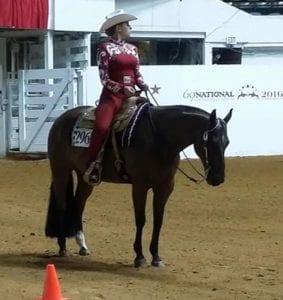 As Kearns has pointed out multiple times, the key to success in horsemanship is mastering the basics. Additionally, there are three basic concepts every rider competing in horsemanship needs to remember:
As Kearns has pointed out multiple times, the key to success in horsemanship is mastering the basics. Additionally, there are three basic concepts every rider competing in horsemanship needs to remember:
- Know the rules of your class.
- There is no substitute for practice at home and at the show.
- Always celebrate, regardless of winning or losing.
Great advice, thank you Brad!




